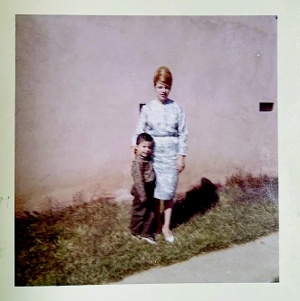Lighting the Candle: Thinking About the Verb
When I speak to groups of young people, I say, “I’m going to ask you a question. I’ll give you three seconds to think of an answer, and right now, I’m going to tell you that you will be wrong.”
The question I ask is: “What do you want to do when you grow up?”
When I speak to groups of young people, I say, “I’m going to ask you a question. I’ll give you three seconds to think of an answer, and right now, I’m going to tell you that you will be wrong.”
The question I ask is: “What do you want to do when you grow up?”
I get answers like doctor, lawyer, engineer, dancer, writer. And I say, “That answer is wrong because I didn’t ask what you want to be. I asked what you want to do. So now answer the question with a verb. Do you want to heal? Do you want to cure? Do you want to counsel? Do you want to research? Do you want to entertain? Do you want to inform?”
Most of us chase the noun when we should be thinking about the verb.
What I discovered is that I like to make things. I paint. I draw. I build. I cut. I saw. I craft.

Photo of Joe Cepeda and his mother courtesy of Joe Cepeda.
I grew up in East Los Angeles, where my family lived in a small house. My mother was a teacher’s aide, and my father was a janitor. As the eldest of three, I had to path-find, and I helped with things like painting the house. Spanish was my first language, though I stopped speaking Spanish when I started school. After that, my parents would talk to me in Spanish and I would respond in English.
It was the time of the Chicano Moratorium anti-war protest. Murals, mostly political, were being painted throughout East Los Angeles.
My grandfather would visit us from Mexico. He was a woodworker, engineer, street lawyer, and Marxist. I thought he was very grand. He used to talk to me about great Mexican muralists such as Diego Rivera, José Clemente Orozco, and Siqueiros, and about Benito Juárez, whom he called the Mexican Abraham Lincoln.
I drew a lot. The children’s books I best remember are the Homer Price books by Robert McCloskey. I loved the drawings. Because they were black and white, I thought I could do those kinds of drawings with my pencil.
My mother had a great appreciation for culture, which may be why, when I was in fifth grade, she enrolled me in an afterschool program (which still exists) at the Los Angeles Music and Art School. A few months after I began, there was an art show and competition. I attended with my mother and was eager to show her my painting — a watercolor scene of a lighthouse and a boat that I probably copied from a magazine — but I couldn’t find it. After a while, I saw it by itself at the end of the hall. I anxiously approached what I thought was my castoff, and then I saw two ribbons next to it — one for best painting among my age group and another for best in show. After that, I was moved into an adult class.

A childhood oil painting by Joe Cepeda.
Though Mom did not let go of her money very easily, she bought us a set of The World Book Encyclopedia. She kept it in her bedroom so we wouldn’t spill anything on it. I would lie on her bed and go through it, volume by volume. As my family didn’t go on vacations and I didn’t see much of the world outside my own neighborhood, the encyclopedia was my portal to the universe. I still remember the flags — national flags as well as nautical ones. And I remember acetate pages that showed muscles, bones, the circulatory system, and organs inside the human body.
Best of all was a full spread of Rembrandt’s The Night Watch. The encyclopedia called it the best painting ever, and I tried to absorb why that was. I observed the composition, unlike any other group portrait, and I studied how the light was cast. (As one of my college art history professors said, “History is the study of what happened. Art history is the study of how people felt about what happened.”) That encyclopedia entry introduced me to the emotional power of art and illustration. And to this day, I still love Rembrandt.
A few years later, I went to an all-boys high school that didn’t foster the arts and didn’t offer art classes. Art wasn’t cool to me anymore, but I was a good student, and my studies took me down a new path. Many years passed before I returned to art. But that’s another story.
From the May/June 2021 special issue of The Horn Book Magazine: The Pura Belpré Award at 25. Find more in the "Lighting the Candle" series here.
RELATED
ALREADY A SUBSCRIBER? LOG IN
We are currently offering this content for free. Sign up now to activate your personal profile, where you can save articles for future viewing.







Add Comment :-
Be the first reader to comment.
Comment Policy:
Comment should not be empty !!!